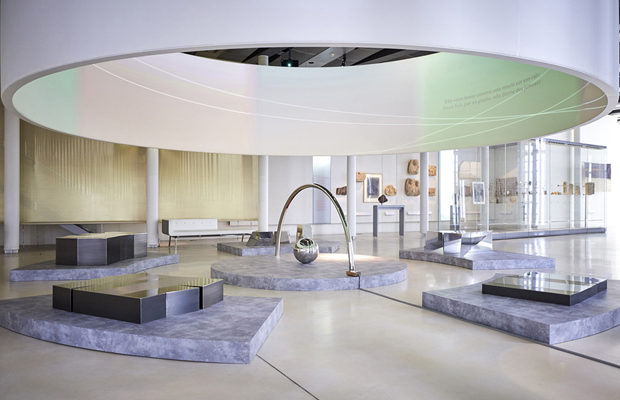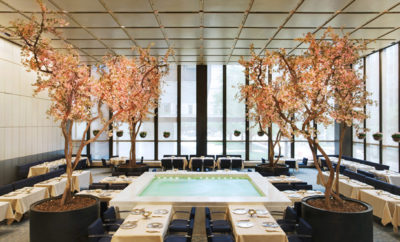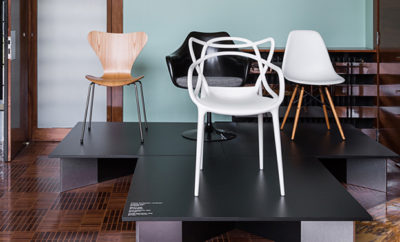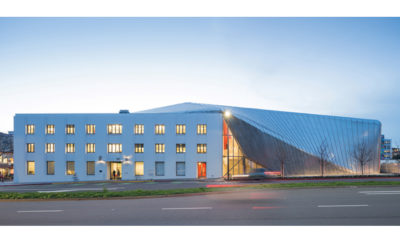 “Respiration” installation view. Photo by Ian Abella.
“Respiration” installation view. Photo by Ian Abella.
Design
A Design Blast from Beirut
At the Institut du Monde Arabe in Paris, Lebanese designer Karen Chekerdjian has created an engaging trail that takes visitors on a journey through her universe.
Karen Chekerdjian made history this year: she became the first Lebanese woman and the first designer ever to curate a solo show at the Institut du Monde Arabe (IMA) in Paris. In a bold move, IMA asked Chekerdjian to exhibit her sculptural works amid the museum’s permanent collection. “I tried to create a promenade within the museum,” Chekerdjian says, explaining how she drew a physical trail along the floor to lead visitors through four levels of exhibition space, thus allowing them to discover her contemporary designs interspersed among the heavier and more traditional Arab pieces on display.
Titled Respiration, the solo show opened at the end of May and runs until August 28, and it features iconic Chekerdjian pieces like Half Rainbow, an otherworldly arch made from polished stainless steel and copper, and the elegantly rhythmic Living Space III, made from wood and rattan and designed to function as a bench, room divider, table, or magazine rack.

Living Space III, 2012. Photo by Nadim Asfar/Marco Pinarelli. © 2016 Karen Chekerdjian.
Respiration begins with a short film by Lebanon-based filmmaker Lana Daher, who shot Chekerdjian in her native Beirut—to present a vision of the city through the designer’s eyes. “My inspiration is Beirut,” Chekerdjian says. “And when I design, my work is brutal and graceful, violent but smooth and soft, with lots of emotions, like Beirut.” Visitors are encouraged to sit in one of five chairs designed by Chekerdjian to watch the film, like the soaring steel and plywood Papillon or the sinking beechwood and leather Elephant. “Depending on which seat you choose, you will experience the movie differently,” she says.
As the exhibition unfolds, and the trail leads to archaeological finds from Yemen and Saudi Arabia, Chekerdjian introduces her Archetype collection. “Archetype is the essence of an object,” she says, “something anybody would recognize as is, something that exists in our collective memory.” These smaller, carefully imagined objects—the Paper Cut letter opener, the Flint paperweight—provide a stark contrast to the ancient pieces exhibited.
Other small objects include Chekerdjian’s offbeat jewelry pieces, which are displayed as a gateway to IMA’s collection of antique Arab jewelry. “My jewels are objects,” Chekerdjian says. “They’re recognizable, brutal pieces that you integrate into your body.”
The larger works, like Rolling Stone, Iqar, and that magnificent Half Rainbow, are set in the home interiors area of the museum and displayed in a futuristic manner, in a sort of extraterrestrial discourse, with Rolling Stone serving as a central sphere around which the other items rotate.

Installation view, featuring Transform, Rolling Stone, Half Rainbow. Photo by Ian Abella.
The name of the show, “Respiration,” means breathing, and it bears particular significance for Chekderdjian. “Respiration brings you back to life,” she says. “When I design, I feel that I come back to life.”
Through her designs, Chekerdjian tells stories—of objects she found and that are now part of her work, of Lebanese craftsmen who have been plying their trade for decades, and of Beirut, a Mediterranean city constantly redefining itself and refusing to become a reflection of what the world wants it to be.












